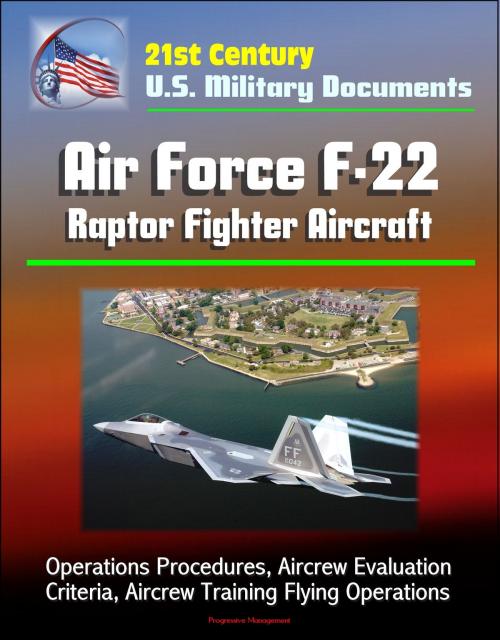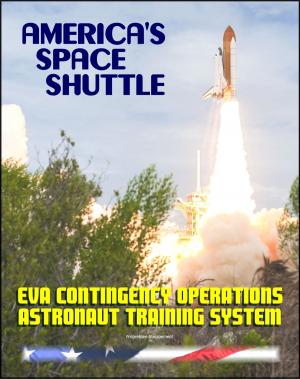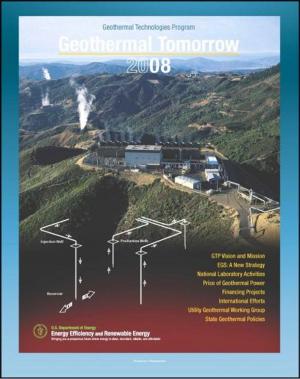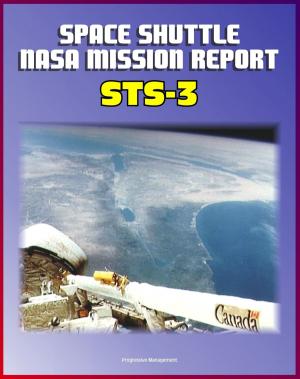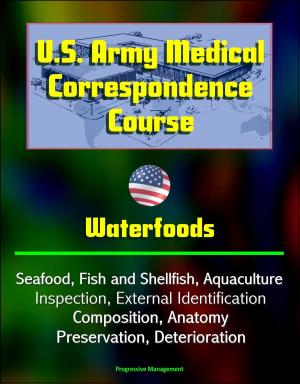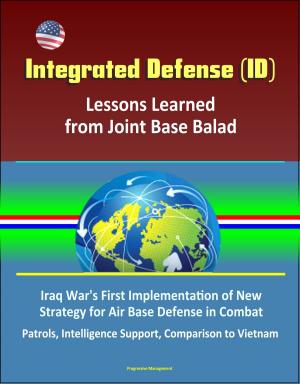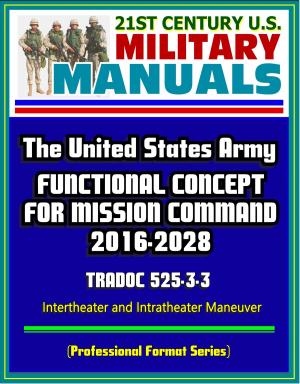21st Century U.S. Military Documents: Air Force F-22 Raptor Fighter Aircraft - Operations Procedures, Aircrew Evaluation Criteria, Aircrew Training Flying Operations
Nonfiction, Science & Nature, Technology, Aeronautics & Astronautics, History, Military, Aviation| Author: | Progressive Management | ISBN: | 9781310429446 |
| Publisher: | Progressive Management | Publication: | November 9, 2013 |
| Imprint: | Smashwords Edition | Language: | English |
| Author: | Progressive Management |
| ISBN: | 9781310429446 |
| Publisher: | Progressive Management |
| Publication: | November 9, 2013 |
| Imprint: | Smashwords Edition |
| Language: | English |
Three Air Force documents provide unique information about USAF operations of the F-22 Raptor Fighter aircraft.
Contents: Operations Procedures * Aircrew Evaluation Criteria * Aircrew Training
Chapter 1 * GENERAL GUIDANCE * 1.1. General * 1.2. Waivers * 1.3. Processing Changes * Chapter 2 * MISSION PLANNING * 2.1. Responsibilities * 2.2. General Procedures * 2.3. Map/Chart Preparation * 2.4. Briefing/Debriefing * 2.5. Unit Developed Checklists/Local Pilot Aids/Forms * 2.6. G-suit/Combat Edge Use * 2.7. Fuel Conservation * Chapter 3 * NORMAL OPERATING PROCEDURES * 3.1. Ground Communications * 3.2. Ground Visual Signals * 3.3. Ground Operations * 3.4. Flight Lineup * 3.5. Before Takeoff Checks * 3.6. Takeoff * 3.7. Formation Takeoff * 3.8. Join-up/Rejoin * 3.9. Formation, Visual and Administrative * 3.10. Tactical Formation * 3.11. Chase Formation * 3.12. Aerial Demonstrations * 3.13. Maneuvering Parameters * 3.14. Ops Checks * 3.15. Radio Procedures * 3.16. General Low Altitude Procedures * 3.17. Air Refueling * 3.18. Night Procedures * 3.19. Night Vision Goggles (NVG) Procedures * 3.20. Fuel Requirements * 3.21. Approaches and Landings * 3.22. Overhead Traffic Patterns * 3.23. Tactical Overhead Traffic Patterns * 3.24. Touch-and-Go Landings * 3.25. Low Approaches * 3.26. Closed Traffic Patterns * 3.27. Formation Approaches * 3.28. After Shutdown Procedures * 3.29. Identification Friend or Foe/Selective Identification Feature (IFF/SIF) * 3.30. Weather Minimums * 3.31. Summary of Minimum Altitudes * Chapter 4 * INSTRUMENT PROCEDURES * 4.1. Approach Category * 4.2. Takeoff and Join-up * 4.3. Trail Procedures * 4.4. Formation Break-up * 4.5. Formation Penetration * 4.6. Formation Approach * 4.7. Simulated Instrument Flight * Chapter 5 * AIR-TO-AIR WEAPONS EMPLOYMENT * 5.1. References * 5.2. Simulated Gun Employment * 5.3. Maneuvering Limitations * 5.4. Aerial Gunnery Tow Procedures * Chapter 6 * AIR-TO-SURFACE WEAPONS EMPLOYMENT * 6.1. References * 6.2. Simulated Off-Range Weapons Employment While Carrying A/G Ordnance * 6.3. Weather Minimums * 6.4. Night Weapons Delivery/Range Operations * 6.5. Target Identification * 6.6. Live Ordnance Procedures * Chapter 7 * ABNORMAL OPERATING PROCEDURES * 7.1. General * 7.2. Ground Aborts * 7.3. Takeoff Aborts * 7.4. Air Aborts * 7.5. Engine Malfunctions * 7.6. Radio Failure * 7.7. Severe Weather Penetration * 7.8. Lost Wingman Procedures * 7.9. Spatial Disorientation (SD) * 7.10. Armament System Malfunctions * 7.11. Post Arresting Gear Engagement Procedures * 7.12. In-flight Practice of Emergency Procedures * 7.13. Search and Rescue (SARCAP) Procedures * Chapter 8 * LOCAL OPERATING PROCEDURES * 8.1. General * 8.2. If Applicable Procedures * 8.3. Distribution of Local Supplements * 8.4. Forms Adopted * Attachment 1 * GLOSSARY OF REFERENCES AND SUPPORTING INFORMATION * Attachment 2 * CHEMICAL, BIOLOGICAL, RADIOLOGICAL, NUCLEAR, AND HIGH YIELD EXPLOSIVE (CBRNE) OPERATIONS * Attachment 3 * GENERAL & SPECIAL SUBJECT BRIEFING GUIDE * Attachment 4 * ADVANCED HANDLING/INSTRUMENT BRIEFING GUIDE
Chapter 1 * GENERAL INFORMATION * 1.1. General * 1.2. Waivers * 1.3. Procedures * 1.4. Grading Instructions * 1.5. Emergency Procedures Evaluation (EPE) * 1.6. Deleted * 1.7. Documentation of Weapons Employment Results * 1.8. Deleted * Chapter 2 * EVALUATION REQUIREMENTS * 2.1. General * 2.2. Pilot Instrument/Qualification Evaluation * 2.3. Mission Evaluation * 2.4. Formal Course Evaluation * 2.5. Instructor Evaluation * Chapter 3 * EVALUATION CRITERIA * 3.1. General Grading Standards * 3.2. General * 3.3. Instrument * 3.4. Tactical Employment * Attachment 1 * GLOSSARY OF REFERENCES AND SUPPORTING INFORMATION
Three Air Force documents provide unique information about USAF operations of the F-22 Raptor Fighter aircraft.
Contents: Operations Procedures * Aircrew Evaluation Criteria * Aircrew Training
Chapter 1 * GENERAL GUIDANCE * 1.1. General * 1.2. Waivers * 1.3. Processing Changes * Chapter 2 * MISSION PLANNING * 2.1. Responsibilities * 2.2. General Procedures * 2.3. Map/Chart Preparation * 2.4. Briefing/Debriefing * 2.5. Unit Developed Checklists/Local Pilot Aids/Forms * 2.6. G-suit/Combat Edge Use * 2.7. Fuel Conservation * Chapter 3 * NORMAL OPERATING PROCEDURES * 3.1. Ground Communications * 3.2. Ground Visual Signals * 3.3. Ground Operations * 3.4. Flight Lineup * 3.5. Before Takeoff Checks * 3.6. Takeoff * 3.7. Formation Takeoff * 3.8. Join-up/Rejoin * 3.9. Formation, Visual and Administrative * 3.10. Tactical Formation * 3.11. Chase Formation * 3.12. Aerial Demonstrations * 3.13. Maneuvering Parameters * 3.14. Ops Checks * 3.15. Radio Procedures * 3.16. General Low Altitude Procedures * 3.17. Air Refueling * 3.18. Night Procedures * 3.19. Night Vision Goggles (NVG) Procedures * 3.20. Fuel Requirements * 3.21. Approaches and Landings * 3.22. Overhead Traffic Patterns * 3.23. Tactical Overhead Traffic Patterns * 3.24. Touch-and-Go Landings * 3.25. Low Approaches * 3.26. Closed Traffic Patterns * 3.27. Formation Approaches * 3.28. After Shutdown Procedures * 3.29. Identification Friend or Foe/Selective Identification Feature (IFF/SIF) * 3.30. Weather Minimums * 3.31. Summary of Minimum Altitudes * Chapter 4 * INSTRUMENT PROCEDURES * 4.1. Approach Category * 4.2. Takeoff and Join-up * 4.3. Trail Procedures * 4.4. Formation Break-up * 4.5. Formation Penetration * 4.6. Formation Approach * 4.7. Simulated Instrument Flight * Chapter 5 * AIR-TO-AIR WEAPONS EMPLOYMENT * 5.1. References * 5.2. Simulated Gun Employment * 5.3. Maneuvering Limitations * 5.4. Aerial Gunnery Tow Procedures * Chapter 6 * AIR-TO-SURFACE WEAPONS EMPLOYMENT * 6.1. References * 6.2. Simulated Off-Range Weapons Employment While Carrying A/G Ordnance * 6.3. Weather Minimums * 6.4. Night Weapons Delivery/Range Operations * 6.5. Target Identification * 6.6. Live Ordnance Procedures * Chapter 7 * ABNORMAL OPERATING PROCEDURES * 7.1. General * 7.2. Ground Aborts * 7.3. Takeoff Aborts * 7.4. Air Aborts * 7.5. Engine Malfunctions * 7.6. Radio Failure * 7.7. Severe Weather Penetration * 7.8. Lost Wingman Procedures * 7.9. Spatial Disorientation (SD) * 7.10. Armament System Malfunctions * 7.11. Post Arresting Gear Engagement Procedures * 7.12. In-flight Practice of Emergency Procedures * 7.13. Search and Rescue (SARCAP) Procedures * Chapter 8 * LOCAL OPERATING PROCEDURES * 8.1. General * 8.2. If Applicable Procedures * 8.3. Distribution of Local Supplements * 8.4. Forms Adopted * Attachment 1 * GLOSSARY OF REFERENCES AND SUPPORTING INFORMATION * Attachment 2 * CHEMICAL, BIOLOGICAL, RADIOLOGICAL, NUCLEAR, AND HIGH YIELD EXPLOSIVE (CBRNE) OPERATIONS * Attachment 3 * GENERAL & SPECIAL SUBJECT BRIEFING GUIDE * Attachment 4 * ADVANCED HANDLING/INSTRUMENT BRIEFING GUIDE
Chapter 1 * GENERAL INFORMATION * 1.1. General * 1.2. Waivers * 1.3. Procedures * 1.4. Grading Instructions * 1.5. Emergency Procedures Evaluation (EPE) * 1.6. Deleted * 1.7. Documentation of Weapons Employment Results * 1.8. Deleted * Chapter 2 * EVALUATION REQUIREMENTS * 2.1. General * 2.2. Pilot Instrument/Qualification Evaluation * 2.3. Mission Evaluation * 2.4. Formal Course Evaluation * 2.5. Instructor Evaluation * Chapter 3 * EVALUATION CRITERIA * 3.1. General Grading Standards * 3.2. General * 3.3. Instrument * 3.4. Tactical Employment * Attachment 1 * GLOSSARY OF REFERENCES AND SUPPORTING INFORMATION
